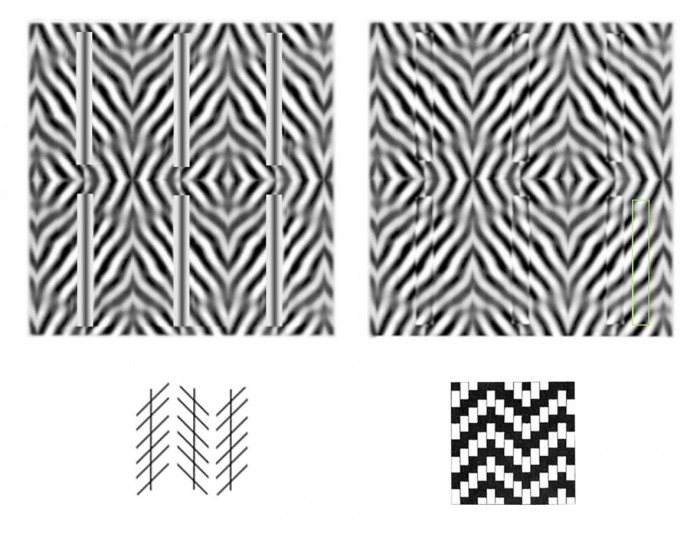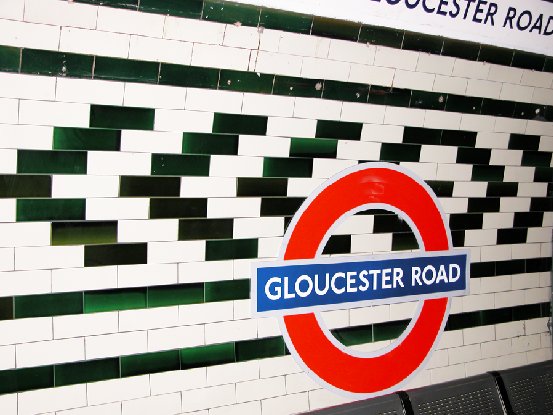Many of the illusions in popular books are geometric ones, in which lines that are really parallel look wonky, or lines that are aligned seem not to be. Most of these figures were discovered by German researchers, a hundred to a hundred and fifty years ago. But how geometric do they have to be? With graphics packages it’s easy and fun to explore. Here are versions of two famous illusions, one showing apparent divergence where the other presents convergence, against the same “zebra skin” background.
The illusion of the left is the Zöllner illusion. The long lines, or bars, seem rotated slightly against the slope of the background pattern. (Viewing the illusion rotated so you see the background as a diamond shape will enhance the effect). The illusion on the right is a member of the family of “twisted cord” illusions – the version below is called the Kindergarten illusion. For the version above it, I’ve just cut a bar shaped selection from the area faintly outlined in yellow, lower right. I’ve pasted it (with a slightly soft focus edge, which seems to enhance the effect), reversing it where necessary so that the sloping lines are all aligned.
The twisted cord illusions are thought to arise very early in visual processing, maybe even in the retina, in a process I’ll come back to in a later post. There’s not much consensus about how the Zöllner illusion arises. In fact all the illusions are fascinating puzzles, because they have proved remarkably hard to explain. Research papers from a century ago are still often well worth reading.
Here’s another version of the Kindergarten illusion, in the tilework of London’s Gloucester Road underground station, on the Piccadilly line platform. The effect is not very strong. Notice that although the lines of black and white tiles converge to the right, as they should, with perspective, they also seem to diverge either side of the sign, more than they should with perspective to the left, and against the perspective convergence to the right.
This underground line was constructed just about the time researchers were first studying these illusions, but I don’t think the illusion here is deliberate. There are all sorts of ornamental tilework on the Piccadilly line.
For a good presentation of the related Café Wall illusion, see:
http://www.michaelbach.de/ot/ang_cafewall/index.html
and for twisted cord illusions generally


